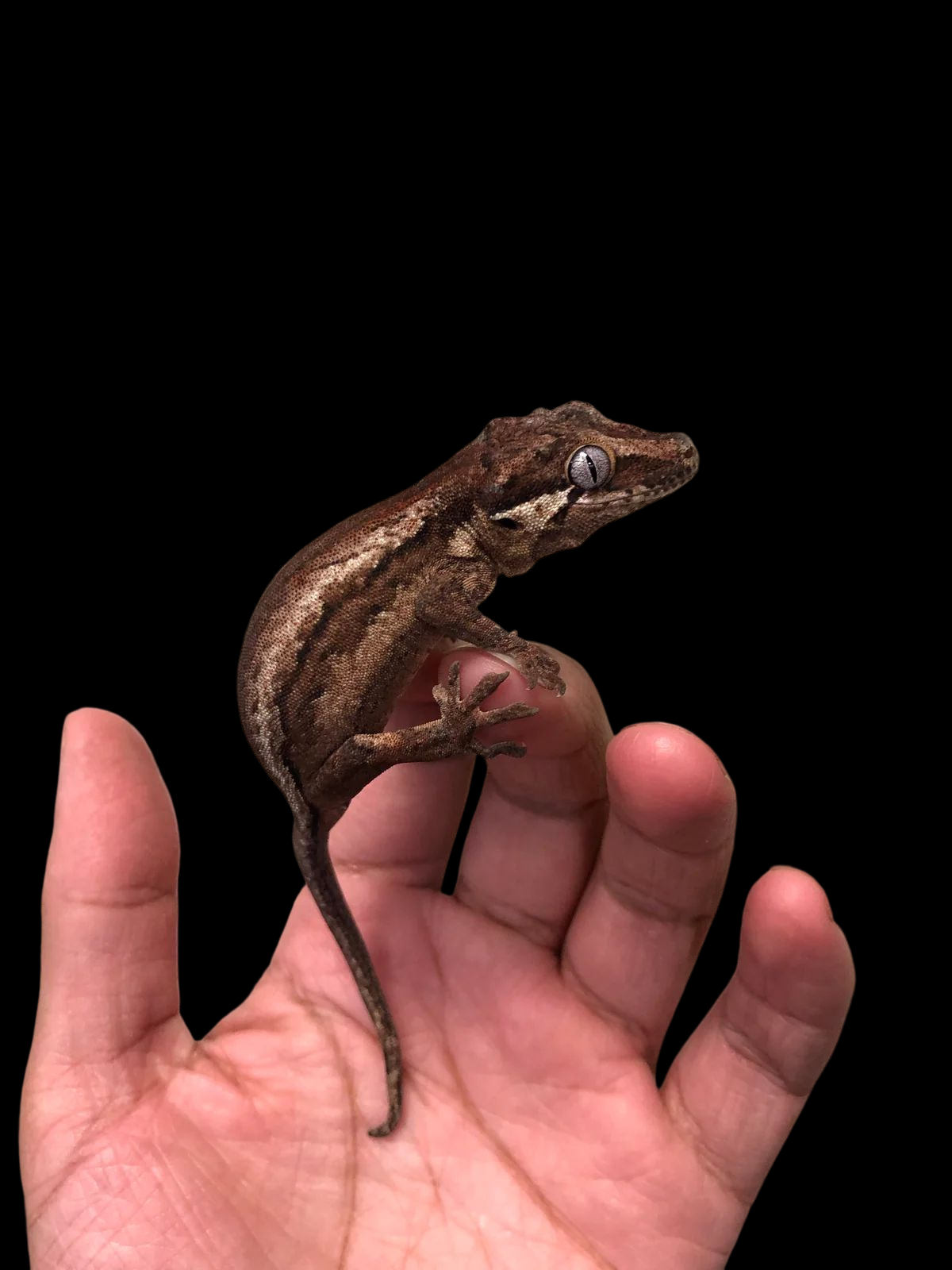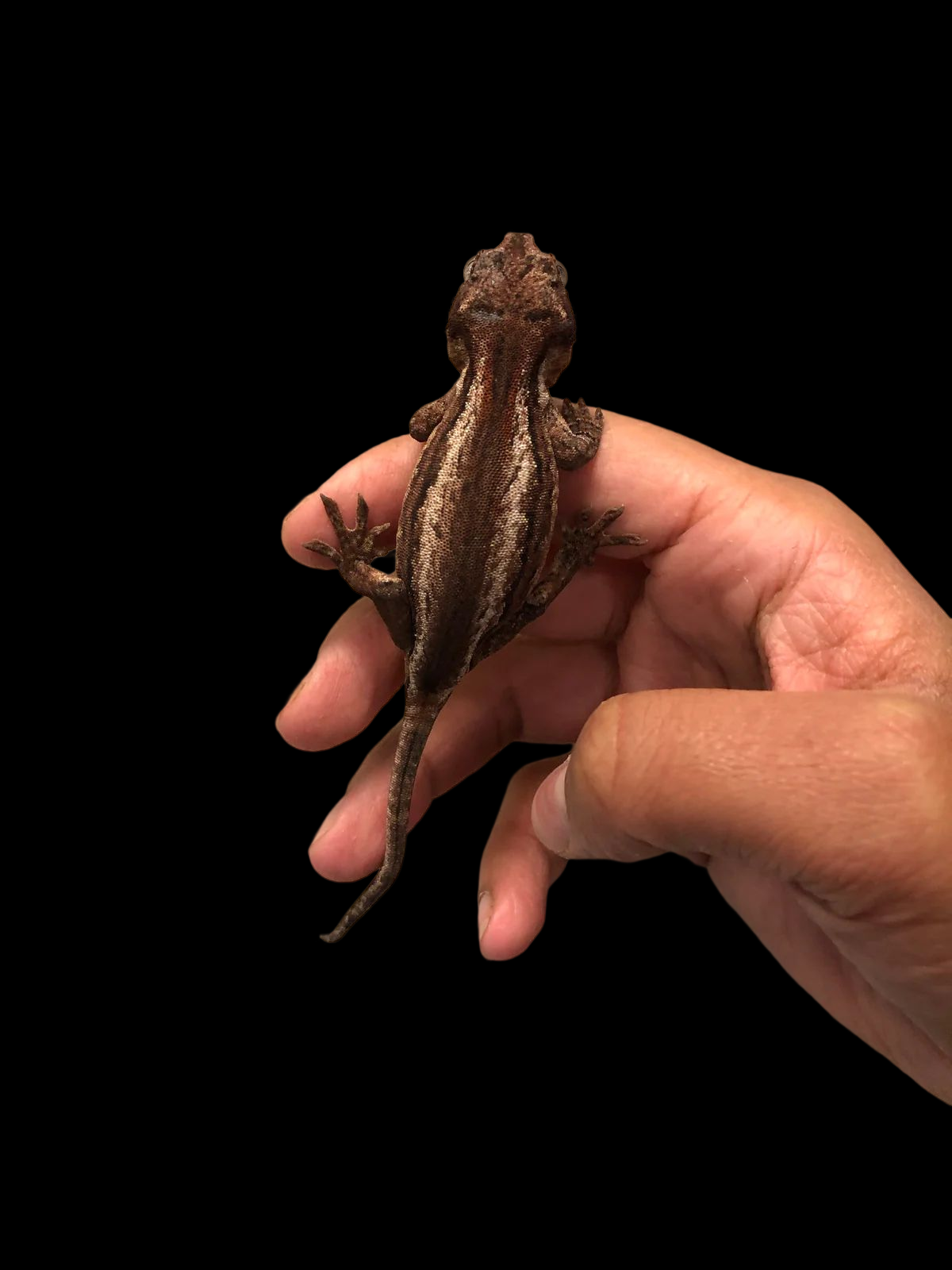Photo Disclaimer
Description
Gargoyle Gecko
Scientific Name: Rhacodactylus auriculatus
Common Name: Gargoyle Gecko
Species Overview
Size: Adults typically reach 7–9 inches (18–23 cm) in total length, including the tail. They are sturdy, semi-arboreal geckos with well-defined musculature and a strong jaw.
Appearance: The Gargoyle Gecko is named for the bony ridges above its eyes, giving it a distinctive “horned” or “gargoyle-like” appearance. Colour and pattern variation are extensive, ranging from mottled greys and browns to bright reds, oranges, yellows, and creams. Common pattern types include striped, blotched, and reticulated forms. Their skin has a soft, suede-like texture and is easily shed, while their tails are semi-prehensile, aiding in balance and climbing. Unlike crested geckos, Gargoyles can regenerate lost tails.
Distribution: Endemic to the southern forests of New Caledonia, an island group in the South Pacific.
Habitat: In the wild, Gargoyle Geckos inhabit humid, subtropical forests and scrublands, where they live among branches, vines, and dense foliage. In captivity, they thrive in naturalistic, vertically oriented enclosures with ample climbing opportunities.
Behaviour: Primarily nocturnal, Gargoyle Geckos are active, curious, and calm once accustomed to their environment. They are known for their gentle disposition and adaptability, making them excellent display and beginner species. Males are territorial and should be housed singly, while females may sometimes cohabit in spacious, well-structured enclosures.
Captive Care
Enclosure: Provide a vertical enclosure measuring at least 18 inches × 18 inches × 24 inches (45 × 45 × 60 cm) for an adult. Include cork bark, branches, vines, and sturdy foliage for climbing and security. Naturalistic setups with live or artificial plants help regulate humidity and create enrichment.
Temperature & Humidity: Maintain daytime temperatures between 74–82°F (23–28°C) with a nighttime drop to 68–72°F (20–22°C). Avoid temperatures above 85°F (29°C), as overheating can cause stress. Keep humidity between 60–80%, with regular misting to maintain hydration and promote natural shedding.
Lighting: While nocturnal, Gargoyle Geckos benefit from low to moderate UVB lighting (2–5%) to support calcium metabolism and overall health. Provide a consistent 12-hour light cycle.
Diet: Offer a balanced diet consisting of commercial fruit-based gecko diets (such as Pangea or Repashy) 3–4 times weekly, supplemented with small live insects like crickets, roaches, or silkworms once or twice a week. All insects should be dusted with calcium and vitamin supplements.
Behaviour in Captivity: Gargoyle Geckos adapt well to captivity and quickly become visible and active during the evening. They are tolerant of gentle handling once accustomed, though excessive restraint should still be avoided. Their climbing and exploring behaviours make them captivating to observe.
Special Considerations: Ensure good ventilation to prevent stagnant humidity and provide secure climbing décor to prevent falls. Although they can regenerate lost tails, tail drops should still be avoided through calm handling and minimal stress.
Taxonomy Note
The Gargoyle Gecko (Rhacodactylus auriculatus) belongs to the family Diplodactylidae and is one of several New Caledonian geckos closely related to the Crested Gecko (Correlophus ciliatus). Once grouped within the same genus, Rhacodactylus species are now recognized as distinct but closely allied. The Gargoyle Gecko is the most robust and terrestrial member of the group, known for its adaptability in captivity and wide range of natural colour and pattern morphs.
Genetics Note
The Gargoyle Gecko (Rhacodactylus auriculatus) is highly variable, with numerous selectively bred morphs and pattern types, including striped, reticulated, mottled, and red, as well as combinations emphasizing base colour and contrast. These differences are polygenic (influenced by multiple genes) rather than single-gene mutations, resulting in endless variation within captive populations.


